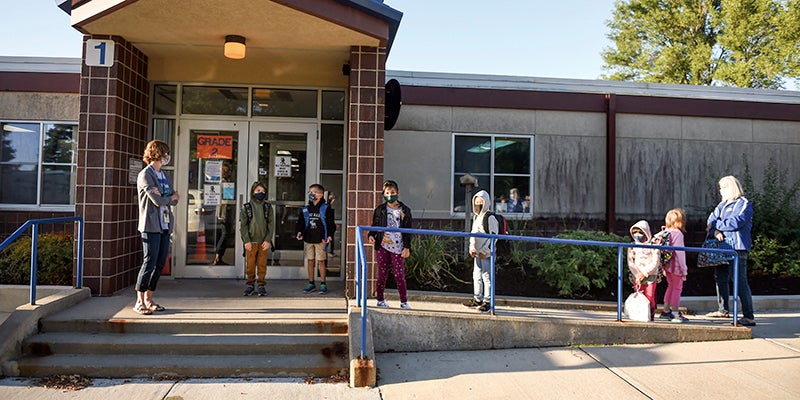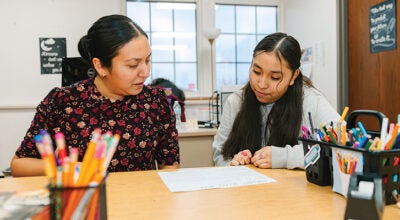Back to Class: Austin Public Schools kick off 2020-21 school year under COVID-19
Published 7:01 am Saturday, September 5, 2020

- Southgate Elementary students wait to enter the school building for the first day of school Wednesday morning. Eric Johnson/photodesk@austindailyherald.com
|
Getting your Trinity Audio player ready...
|
Southgate Elementary Principal Katie Baskin stood along 16th Street Southwest, on the west side of the school, Wednesday morning and watched the buses roll by.
Every so often she would call any student in third or fourth grade to come to her after getting off the bus, commenting at one point to a student, “You just keep growing.”
This was the first day of the 2020-21 school year and despite it looking very different from years past, it was a happy day for students and staff alike.
“The kids were excited to be here, the staff was excited to see the kids again,” Baskin said later in the day. “We’re just doing our thing and it feels so good.”
In a staggered start, schools ramped back up to in-person learning this week with Pre K-6 starting their year on Wednesday and 7-12 starting Thursday.
It was a welcome return after last school year ended abruptly because of the COVID-19 pandemic.
Through the summer, there was a constant question as to what this next year would look like: a return to classrooms, staying in distance learning or a hybrid somewhere between.
In August, the Minnesota Department of Health and Gov. Tim Walz put the school years in the hands of schools based on a formula that connected how the school year would go directly with the case count in each individual county.
For the last month, Mower County has seen it’s daily case numbers dwindle to single digits most every day, allowing APS to send its students through sixth grade to classrooms full time and using a hybrid model with seventh grade and above that split the students into groups with half going to school Monday and Tuesday and the other half Thursday and Fridays.
The idea that students are back in classrooms takes the anxiety off of teachers, students, parents and administrators.
“It really does,” agreed Superintendent David Krenz, who will retire at the end of this year. “I think the biggest point of anxiety for us all, especially teachers, is it’s been so long. There are a lot of changes.”
Among these changes are students wearing masks and maintaining social distancing; however, Baskin said that her school has still been able to keep on moving forward, in some instances as if nothing has changed.
“Parents and us other adults wondered how these little ones were going to handle masks and shields,” Baskin said. “They are beautiful. They handle it better than I do sometimes.”
It’s certainly better than the alternative as Baskin thought back to this past spring.
“March was hard,” she said. “It was sad. We thrive off this interaction and relationships and when you have to change that so quickly, it’s really hard.”
It left unanswered questions that led up to the first day.
“(Wednesday) has just lifted that stress and we said, ‘Okay, we’re here, we got this. We can do this,’” Baskin said. “We’re grateful.”
It wasn’t 100 percent smooth sailing as issues with transportation became a tangle on both Tuesday and Wednesday. Palmer Bus Service was down 12 drivers and with a staggered busing system because of COVID-19 recommendations, it has strained things considerably.
“Almost 40 percent of their workforce is gone,” Krenz said, explaining the district is working with Palmer to streamline the process. “We really appreciate the support of parents and their willingness to get their kids to school on their own.”
But for now, the kids are back and the staff couldn’t be happier as they work to get back into the swing of in-person learning. More than that, it’s about rebuilding relationships.
“We’re grateful. We are so grateful to see our kids and do what we do best — build relationships and help them grow as a student,” Baskin said.
Krenz heard the same thing from teachers as he visited the schools this week.
“One teacher, I was talking to her today and she said, ‘Just the joy of having the kids back. I didn’t realize how much I missed them,’” he said. “These kids become their own surrogate families and really, as teachers, they miss having that personal contact on a regular basis.”





